
Globbo! is a board game published by Steve Jackson Games (SJG) in 1984 in which a murderous blob tries to eliminate equally murderous blob children.

Globbo! is a board game published by Steve Jackson Games (SJG) in 1984 in which a murderous blob tries to eliminate equally murderous blob children.
Globbo! is a two-player game set on the planet Ticketa-Koo in which one player controls Globbo, a giant ameoba-like babysitter armed with blue zap guns and red slapping hands that is programmed so that it will destroy the blob children. The other player controls the blob children that take the form of biters, blips and yeasts. [1] During combat, the attacker rolls a die and attempts to eliminate the defender by getting a number equal to or less than the total strength of the attacker. [2]
The sides of the map "wrap" to their opposite edges — a piece that moves off the right side of the board reappears on the left side of the board. [3] The map also includes some warp holes to move pieces to another part of the board. [3]
Globbo, designed by Allen Varney, who also did the artwork, appeared as a free-pull-out game in Issue 62 of SJG's house magazine The Space Gamer . [3] SJG also released the game in booklet form with larger counters and map and two extra rules. [3] In both editions, both the map and the counters were paper sheets that had to be cut apart. [2]
Russell Grant Collins reviewed Globbo in Space Gamer No. 70. [1] Collins commented that "If you have the magazine version of Globbo, the only things from this version that you're missing are the nifty red printing used for emphasis in the text, a few more Globbo-related illustrations, and two new extras from section IX [...] This may not be enough to convince you to buy the game again, though the larger map and pieces are nice too. If you don't have the magazine game and you enjoy strange games, run (don't walk) to get it." [1]
Mike Lewis reviewed Globbo! for Imagine magazine, and stated that "It is difficult to rate Globbo! as a game; it is fun to play and the rules are extremely funny to read through, but will the humour last or will the game pall after a few plays? However, I don't think the game is designed for anything more than laughs, and it succeeds admirably in its aims." [4]
In Issue 62 of Games , R. Wayne Schmittberger commented, "This science fiction board game could win awards for the funniest rulebook and the most outlandish premise. [...] For all its absurdity, Globbo is a very well designed, highly enjoyable game, requiring interesting and unusual strategies. Though inexpensively produced (the board is paper and the pieces have to be cut apart by hand), this is a quality game that is well worth its bargain price." [2]
In a retrospective review in Issue 24 of Simulacrum, John Kula noted that the game was "Almost all premise. The rules themselves are handwritten and funny." He concluded "The gameplay feels a little dated, a little too wargamey for its subject matter, but not bad at all." [3]
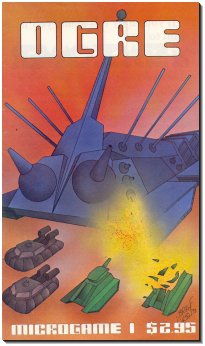
OGRE is a science fiction board wargame designed by the American game designer Steve Jackson and published by Metagaming Concepts in 1977 as the first microgame in its MicroGame line. When Steve Jackson left Metagaming to form his own company, he took the rights to OGRE with him, and all subsequent editions have been produced by Steve Jackson Games (SJG).

Cathedral, also known as Cathedral: The Game of the Mediaeval City, is a two-player abstract strategy game designed by Robert Moore and first published in 1979, in which dark and light factions vie for territorial supremacy within the bounds of a medieval city. Players play pieces to capture territory on a game board, attempting to place all or most of their game pieces while preventing their opponent from doing likewise. The game's copyright is currently owned by Chrisbo I.P. Holdings Limited in New Zealand.

Fields of Action is an abstract strategy board game for two players.

Invasion: America, subtitled "Death Throes of the Superpower", is a near-future board wargame published by SPI in 1976 that simulates a hypothetical coordinated attack on North America by various factions.
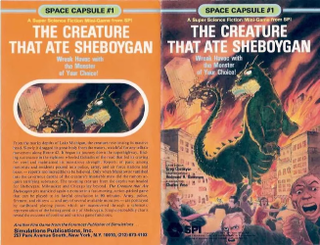
The Creature That Ate Sheboygan is a science fiction board game released in 1979 by Simulations Publications (SPI). The game received good reviews and won an industry award.
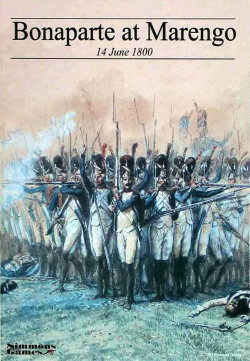
Bonaparte at Marengo is a strategy board wargame published by Simmons Games in 2005 that simulates the Battle of Marengo during the War of the Second Coalition in 1800.
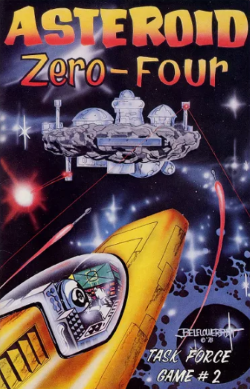
Asteroid Zero-Four is a science fiction board wargame published by Task Force Games in 1979.

Ram Speed, subtitled "Naval Warfare in the Bronze Age", is a two-player microgame published by Metagaming Concepts in 1980 that simulates naval combat between galleys in the Mediterranean during the Bronze Age when the preferred method of attack was ramming a ship.
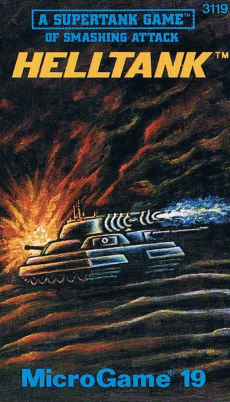
Helltank is a science fiction board wargame published by Metagaming Concepts in 1981 as part of its MicroGame line. The game simulates combat in the future between a supertank and more conventional forces.

Escape from Altassar is a board game published by Task Force Games in 1982 that simulates an attempted escape by human prisoners from an alien penal colony.

Sunday Drivers is a supplement published by Steve Jackson Games (SJG) in 1982 for the board wargame Car Wars.
Truck Stop is a supplement published by Steve Jackson Games (SJG) in 1983 for the board wargame Car Wars.
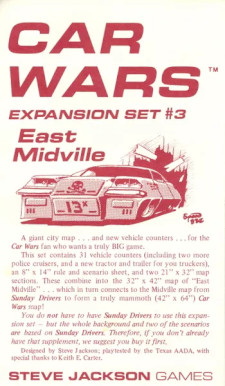
East Midville is an expansion for the Mad Max-like board wargame Car Wars published by Steve Jackson Games (SJG) in 1983.

Napoleon at War, subtitled "Four Battles", is a collection of four board wargames published by Simulations Publications Inc. (SPI) in 1975 that simulates various battles fought by Napoleon.
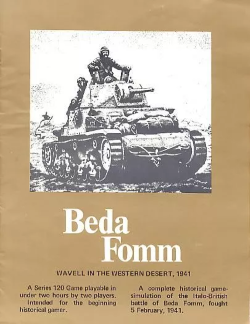
Beda Fomm, subtitled "Wavell in the Western Desert, 1941", is a board wargame published by Game Designer's Workshop (GDW) in 1979 that simulates the Battle of Beda Fomm during World War II. The game was part of GDW's "120 System", games that contained 120 counters, and supposedly could be played in 120 minutes.

The Battle of Nations, subtitled "The Encirclement at Leipzig, 16–19 October 1813", is a board wargame published by Simulations Publications Inc. (SPI) in 1975 that simulates the Battle of Leipzig in 1813. It was one of four games that were published as part of the "quadrigame" titled Napoleon at War, but was also released as a "folio game", packaged in a shrinkwrapped cardboard folio. It was popular in a 1976 poll of favorite wargames, and critics also gave it favorable reviews.
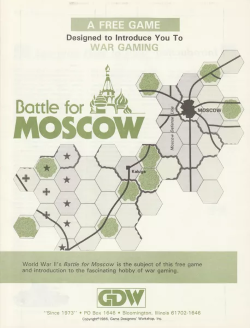
Battle for Moscow is a short and simple board wargame published by Game Designers' Workshop (GDW) in 1986 that simulates Operation Typhoon, the German attempt to quickly capture Moscow during the opening days of their surprise invasion of the Soviet Union in 1941 during World War II. The game was designed as a free giveaway to try to introduce new players to wargaming.

War in the Pacific:The Campaign Against Imperial Japan, 1941–45, is a board wargame published by Simulations Publications Inc. (SPI) in 1978 that simulates the Pacific Campaign during World War II. Critics gave the game positive reviews, praising its use of logistics and "fog of war", and its well-written rules.
Domain is a tile-based abstract strategy game first published throughout Europe in 1982. Players place multicoloured polymino tiles on a game board and flip any of their opponent's pieces adjacent to them in order to have the most squares covered by their colour at the end of the game.

Strike Force One, subtitled "The Cold War Heats Up — 1975", is a board wargame published by Simulations Publications Inc. (SPI) during the Cold War in 1975 that simulates a hypothetical clash in West Germany between Soviet Union invaders, and American defenders. The short and simple game was designed as an introduction to the hobby of wargaming, and was given away as a free promotional item.